A long time before Mexico City became one of the largest cities in the world, the Valley of Mexico was a vast lake system. The lake was connected by a complex system of causeways and canals, and dotted with islands and floating gardens.
Then the Spanish conquistadors arrived, however, and they set about draining the canals, destroying the dams and building roads in their place instead.
Today, it’s hard to imagine that the seemingly limitless urban sprawl that characterises Mexico City was ever home to lagoons and waterways. Until, that is, you visit the canals of Xochimilco.
Updated for 2020. Disclosure: This post may contain affiliate links. For more information please see our disclosure policy.
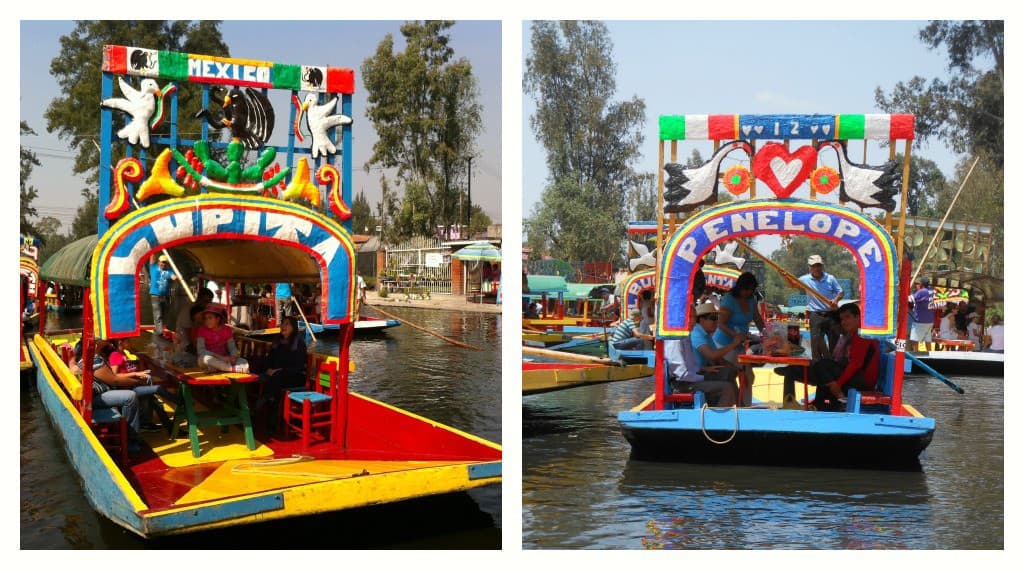
Xochimilco (pronounced so-chee-mil-co) means ‘garden of flowers’ or ‘place where flowers grow’ in the Aztec’s Nahuatl. This neighbourhood in the south of the capital is where you can catch a glimpse of not just pre-Hispanic but pre-Aztec Mexico.
This area, originally a separate city, is the only place in the capital where these Mexico City canals remain. What you see today, however, is just a fraction of what was there originally. It’s one of the most popular tourist attractions in Mexico City.
[author] [author_info]For more ideas on things to do in Mexico City take a look at our top 50 sights and activities! Here’s why you should visit the Frida Kahlo Museum and the capitals’ very own Castle de Chapultepec. [/author_info] [/author]
Visiting the Xochimilco canals
Table of Contents

During Aztec times, the waterways were the main mode of transport. There existed an incredible system of canals and causeways, bridges that could be raised and lowered, levees, dams and miles of aqueducts. Little of this engineering ingenuity is left in Xochimilco apart from the “floating gardens”, called chinampas.
In reality these islands don’t float but were created by sinking cane frames into the shallow lake bed and then filling the frames with mud and old vegetation and sediment.
The islands were – and continue to be – incredibly fertile and were a major agricultural source for the Aztecs. Very few of the thousands and thousands of chinampas remain but they still exist in Xochimilco and are still used to grow vegetables and flowers today.
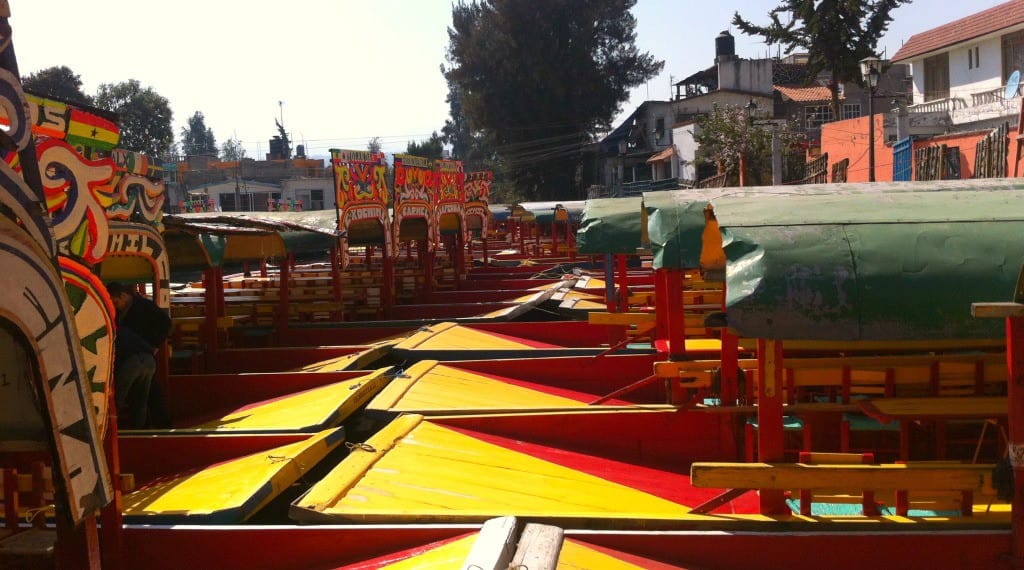
In 1987 Xochimilco was declared a UNESCO World Heritage Site and in 1993 the Parque Ecologico de Xochimilco (ecological reserve), was established to protect the area.
Today, floating along the Venice of Mexico on colorful trajineras (a Mexican type gondola) is a hugely popular weekend pastime. Come along on any Saturday or Sunday and you’ll find families, groups of friends and couples cruising along the ancient canals enjoying a floating fiesta.
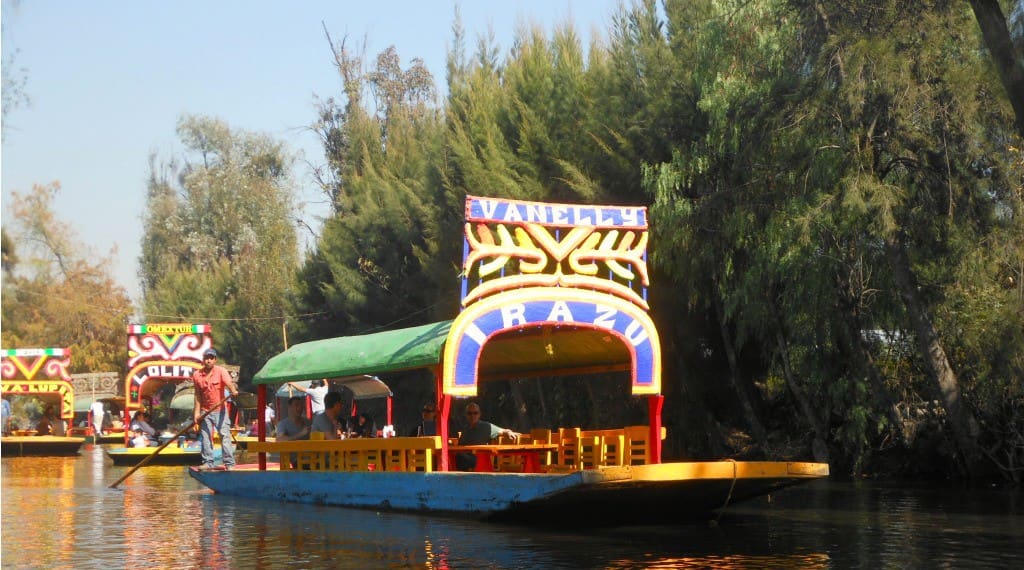
Bobbing alongside the trajineras you’ll find live mariachi groups performing on barges and vendors selling colourful sombreros and ponchos from their wooden canoes. There are boats selling food and drinks, including floating taco stands.
There are even photographers gliding along who will snap your photo and print it for you there and then. Visit during the week and you’ll see kids being paddled to and from school.
There is also the incredibly creepy Isla de las Munecas (Island of the Dolls). Floating past this island you’ll spot dozens of dolls tied to trees. I much prefer the chinampas selling plants and flowers!

[author] [author_info]Don’t miss these 12 museums in Mexico City or a trip on the Turibus. The Centro Historico has been the heart of the capital since Aztec times, our guide tells you how to make the most of the historic centre. [/author_info] [/author]
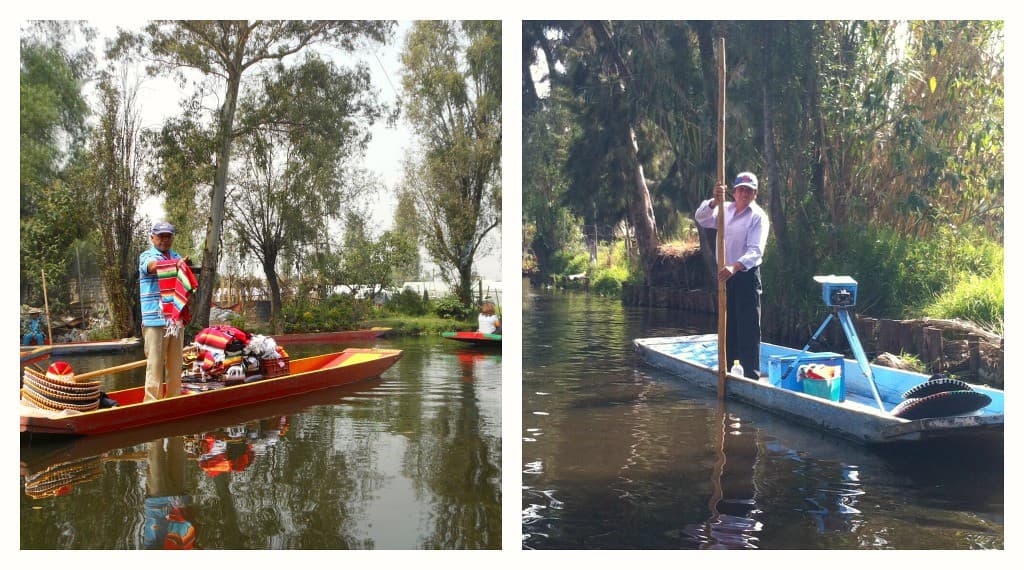
The waters of Xochimilco are also home to the Mexican axolotl (pronounced a-ho-lot-e). It’s also known as a Mexican salamander or the Mexican walking fish (even though it is technically an amphibian). This curious looking fellow is endangered and now a protected species.
One local enterprising family has opened a small “wildlife” centre where you can see an axolotl as well as a number of snakes. Ask your trajinera captain and he’ll take you there.

Xochimilco, Mexico
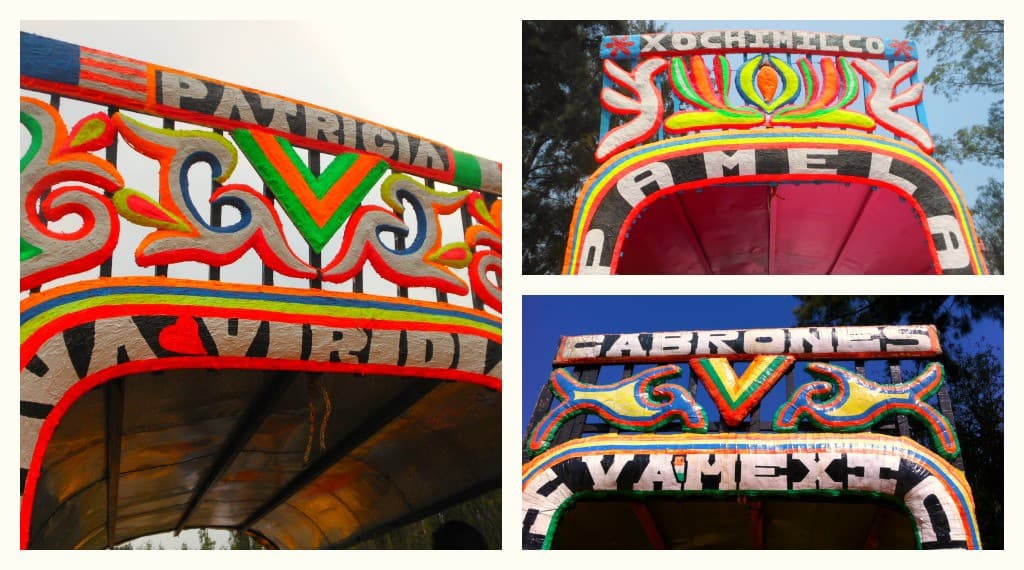
Xochimilco is located in the south of Mexico City. There are nine embarcaderos (boat landings). If driving, you’ll often find that men on bicycles will spot you trying to navigate your way around Xochimilco’s streets and will offer to lead you to the embarcardero where they work.
As much as it’s tempting to think of this as some kind of tourist trap it’s actually very helpful and because all the prices are fixed, you can’t be ripped off. Unless you have a preferred dock then I would recommend following one of these men on bikes.
There are official rates for everything – from the boat hire to price per song from a Mariachi band. At the time of writing, the official website had been suspended at the time of writing but rates should be around MX $500 per hour. This is per boat not per person. You should also tip your boatman at the end of your journey.
The trajineras seat 14 to 20 people. Benches or wooden chairs sit either side of a long wooden table. The table and chairs are in the shade. On Saturdays, Sundays and holidays, there are lanchas colectivas (larger launches) that fit 60 people.
The canals are open year-round; weekdays are quiet, weekends are lively, busy and fun!
Tips for visiting Xochimilco with kids
- The front and back of the boat are open so be careful if you have small children with you.
- We have visited Xochimilco a handful of times with kids, the first time when the children were 2.5-years and 4-years old and it was fine.
- There are toilets! Ask your boatman and he’ll pull up at one of the chinampas.
- Food and antojitos (snacks) are for sale throughout the canals including quesadillas, sopes, and fried chicken.
- Beer and pulque (a milky mildly alcoholic drink made from the fermented sap of the maguey plant) are also available as well as soft drinks and water. A lot of people bring picnics with them.
- Bring cash!
- Three hours is a good length of time to enjoy a boat ride along the canals. You could, however, easily spend the entire day floating along the waterways, especially if the tequila is flowing freely!

Oh I love this! I visited southern Mexico when I was 18, but didn’t get as far as Mexico City. It looks amazing with the canals in the area, Inlive how colourful the boats are, but the Island of dolls is very creepy, looks like part of a horror film!
Thanks so much for linking up to #Whatevertheweather 🙂 x
I know! Every time we go to Xochimilco we float by the Island of Dolls and it’s terrifying each time!
Thx for this post. When I Was in Mexico City, my cab driver mentioned the dried up canals, but I didn’t get a chance to see Xochimilco. So it was difficult to imagine. Amazing how a city can change.
I completely agree that it is almost impossible to imagine that what is present day Mexico City was once a system of canals and waterways – I hope you get to come back!
Wow! Absolutely beautiful!
Thanks!
Fascinating! I have never heard of these in Mexico. It is amazing how many early civilisations/communities relied on canals.Not too many of them left. Very colorful as well! Thanks for sharing
Thanks! I only wish there was more left but it’s a fascinating reminder of how the Valley of Mexico once was.
I want to go to Mexico so bad. Loved the colour of your photos. Amazing
I hope you do get to Mexico! There is so much to see and do!
Oh my gosh this looks incredible. I would absolutely love to go here. I wouldn’t get off the canal. I can’t get over how much history is here and how lively and colourful it all is. I love that this is how people get around too and that you can enjoy music and all the different sites of the busy waterways. It’s so, so beautiful. Thank you so, so much for linking this to #whatevertheweather. xx
Thank you! It’s hard to believe that the entire Valley of Mexico was once like this but it’s great that there is still a pocket of history left. I hope you get to visit one day!
What a colorful place to visit! Will have to add that to my Mexico list.
Mexico is wonderful! So much to see and do.
I love Mexico not only for it’s rich culture and beautiful attractions, but also with how passionate they are with fiestas and festivals.
They certainly know how to throw a fiesta!
I rode on these canals in Mexico City when I was 15 and went on my first international vacation. I fell in love with Mexico and loved looking at these beautiful pictures that reminded me of such a happy vacation. Would love to take my family someday!
What a great trip to take as your first international holiday! I hope you get to visit with your family soon 🙂
Floating mariachis…. say no more!! 😀 Looks like serious fun. I’d never imagine something like this exists in Mexico City.
The floating mariachis are a definite highlight!!
This place looks amazing! lol! floating taco stands! I would love to try those. Thanks for the quick history lesson. I had no idea that Mexico was made of loads of canals before. Very interesting. 🙂 #whatevertheweather
I know, you wouldn’t think it to see Mexico City today (a big tangled jungle of concrete for the most part!) that it was once made up of lakes. I would have loved to have seen it then! And yes, floating taco stands = genius 🙂
Now this looks very cool! 🙂 Fancy checking this out one day. Such a colourful place. I can’t wait to get to Mexico in general. Loved your pics!
Thanks! I hope you get to visit one day, it’s a wonderful country!
This is not what I excepted Mexico city to look like, thank you for dispelling my assumptions! Trajinera seem quite expensive, something to save for?
Unfortunately it’s just a small part of Mexico City, but I agree, I was also surprised to find these canals when we arrived in Mexico City! The trajineras are expensive if there are just a few of you but if you go in a big group then it’s pretty reasonable.
This place looks fantastic. I have never heard of it, but it looks beautiful. I love the mariachis on the boat. That would be so cool to see all those colors floating along!
The mariachis are a definite highlight!!
We had a great day at Xochimilco when we visited a few years back and would definitely go again if the chance comes up. Thanks for reminding me of this wonderful place.
It’s great to hear that you have been! It’s such a fun – and different – place to visit.
Oh it would be lovely to visit and it looks family friendly enough!
Definitely family-friendly, just don’t drink too much tequila! 🙂